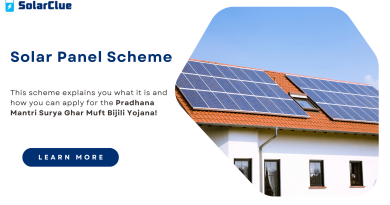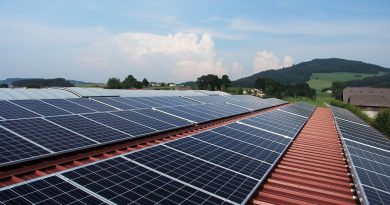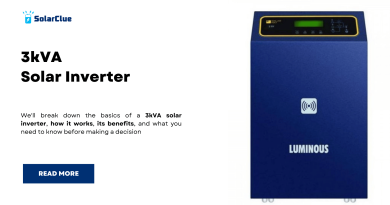What Are The Sizes Of Solar Panels?
When considering the installation of solar panels, understanding their dimensions and how these affect system performance is crucial. The size of the solar panels you choose directly influences the energy output, efficiency, installation requirements, and overall aesthetics of the system. This blog will explore the standard dimensions available for residential and commercial solar panels, how size relates to wattage and efficiency, and other key factors that play a role in the design and layout of a solar panel system.
Table of Contents
- 0.1 Standard Solar Panel Dimensions and Sizes
- 0.2 The Relationship Between Panel Size and Wattage
- 0.3 Factors Affecting Solar Panel Layout and Design
- 0.4 Optimizing Solar Panel Placement for Maximum Efficiency
- 0.5 The Impact of Panel Size on System Aesthetics
- 0.6 Considerations for Different Roof Types and Orientations
- 0.7 The Future of Solar Panel Size and Design Trends
- 0.8 How Panel Size Affects System Cost and Installation Time
- 0.9 Calculating the Required Roof Space for a Solar Panel System
- 0.10 The Impact of Panel Size on Energy Production
- 1 Frequently Asked Questions (FAQs)
Standard Solar Panel Dimensions and Sizes
Solar panels come in various sizes, tailored for different applications, such as residential or commercial. The most common sizes are:
| Application | Standard Dimensions (Height x Width x Depth) | Wattage Range |
|---|---|---|
| Residential | 65 inches x 39 inches x 1.5-2 inches (165 cm x 100 cm x 3.5-5 cm) | 250-400W |
| Commercial | 78 inches x 39 inches x 1.5-2 inches (200 cm x 100 cm x 3.5-5 cm) | 350-450W |
| Specialty/High Efficiency | Varies | 400-600W |
- Residential Panels: Typically smaller and more suited for limited roof space. Their wattage ranges from 250 to 400 watts.
- Commercial Panels: Larger, with higher wattage, often used in commercial setups where space is more abundant.
- Specialty/High Efficiency Panels: These panels can vary in size and offer the highest wattage output, ideal for maximizing energy production in a given space.
The Relationship Between Panel Size and Wattage
The wattage of a solar panel is directly related to its size, but it’s also influenced by the efficiency of the solar cells within the panel. Larger panels generally have more cells and therefore can generate more power. However, advancements in technology have led to high-efficiency panels that can generate more power in a smaller footprint.
- Larger Panels: More surface area means more sunlight capture, leading to higher wattage.
- Smaller, High-Efficiency Panels: These utilize advanced technologies like monocrystalline cells, which offer higher efficiency, allowing them to produce more power per square foot.
Factors Affecting Solar Panel Layout and Design
The layout and design of your solar panel system depend on various factors:
- Roof Space and Shape: The available roof space and its shape dictate how many panels you can install and how they should be arranged.
- Orientation and Tilt: Optimal placement usually involves south-facing panels with a tilt angle that matches your latitude, maximizing exposure to sunlight.
- Shading: Buildings, trees, and other obstructions can cast shadows on your panels, reducing efficiency. Proper layout design minimizes shading.
- Structural Integrity: The roof must support the weight of the panels without compromising its integrity.
Optimizing Solar Panel Placement for Maximum Efficiency
Maximizing the efficiency of your solar system involves strategic placement:
- Orientation: Panels should face true south in the northern hemisphere or true north in the southern hemisphere for maximum sunlight exposure.
- Tilt Angle: Adjusting the angle of the panels according to your geographic latitude can enhance energy production.
- Minimizing Shading: Design your layout to avoid shade from nearby trees, buildings, or other structures.
The Impact of Panel Size on System Aesthetics
While functionality is key, aesthetics also play a significant role in solar panel selection. Larger panels can cover more roof area, potentially affecting the visual appeal of your home or business. Some homeowners prefer smaller panels or black-on-black designs for a sleeker look.
Considerations for Different Roof Types and Orientations
Different roof types, such as flat, pitched, or curved, require specific installation techniques and panel sizes:
- Flat Roofs: Often require mounting systems to achieve the necessary tilt for optimal sunlight capture.
- Pitched Roofs: Panels can be installed flush with the roof, depending on the roof angle and orientation.
- Curved Roofs: These might need customized solutions to ensure proper fit and maximum efficiency.
The Future of Solar Panel Size and Design Trends
As technology advances, we can expect solar panels to become even more efficient, potentially reducing in size while increasing power output. Trends may include:
- Bifacial Panels: These can capture sunlight from both sides, increasing energy production.
- Building-Integrated Photovoltaics (BIPV): Solar materials integrated directly into building materials, such as roof shingles.
How Panel Size Affects System Cost and Installation Time
Larger panels may reduce the overall number of panels needed, potentially lowering installation costs. However, they may also require more robust mounting systems and structural reinforcements, which could increase costs.
Calculating the Required Roof Space for a Solar Panel System
To estimate the roof space required for your solar system:
- Determine your energy needs: Calculate the total wattage required.
- Panel Wattage: Divide your total energy requirement by the wattage of the selected panels.
- Panel Dimensions: Multiply the number of panels by the area each panel covers.
For example, a system requiring 4,000 watts with 400-watt panels would need ten panels, each covering approximately 1.6 square meters, totaling 16 square meters of roof space.
The Impact of Panel Size on Energy Production
Panel size directly impacts energy production, with larger panels generating more electricity. However, the efficiency of the cells and the overall system design play a significant role. Properly designed systems can maximize energy production even with smaller panels.
Frequently Asked Questions (FAQs)
Q1: What are the most common solar panel sizes for residential use? A1: The most common residential solar panel size is approximately 65 inches by 39 inches, with a depth of about 1.5 to 2 inches, producing between 250 and 400 watts.
Q2: How does panel size affect system efficiency? A2: Larger panels can capture more sunlight, but efficiency also depends on the quality of the solar cells. High-efficiency panels can produce more power in a smaller size.
Q3: Can I install larger panels on a small roof? A3: It depends on the available roof space and structural integrity. High-efficiency, smaller panels may be a better option for limited space.
Q4: What is the impact of roof orientation on solar panel placement? A4: Roof orientation affects how much sunlight the panels receive. South-facing roofs are ideal in the northern hemisphere, but adjustments can be made for different orientations.
Q5: Do larger panels cost more to install? A5: Larger panels may require more robust mounting systems, potentially increasing installation costs. However, they may reduce the number of panels needed, balancing the overall cost.
Q6: How can I calculate the roof space needed for a solar panel system? A6: Calculate the total energy needs in watts, divide by the wattage of the selected panels, and multiply by the area each panel covers to estimate required roof space.
Q7: What trends are shaping the future of solar panel design? A7: Trends include more efficient and compact panels, bifacial panels, and building-integrated photovoltaics (BIPV), which integrate solar technology into building materials.
Understanding solar panel dimensions and their implications on system performance is essential for anyone considering solar power. By selecting the right panel size and optimizing layout and design, you can maximize energy production, enhance aesthetics, and ensure a cost-effective, efficient solar power system.



